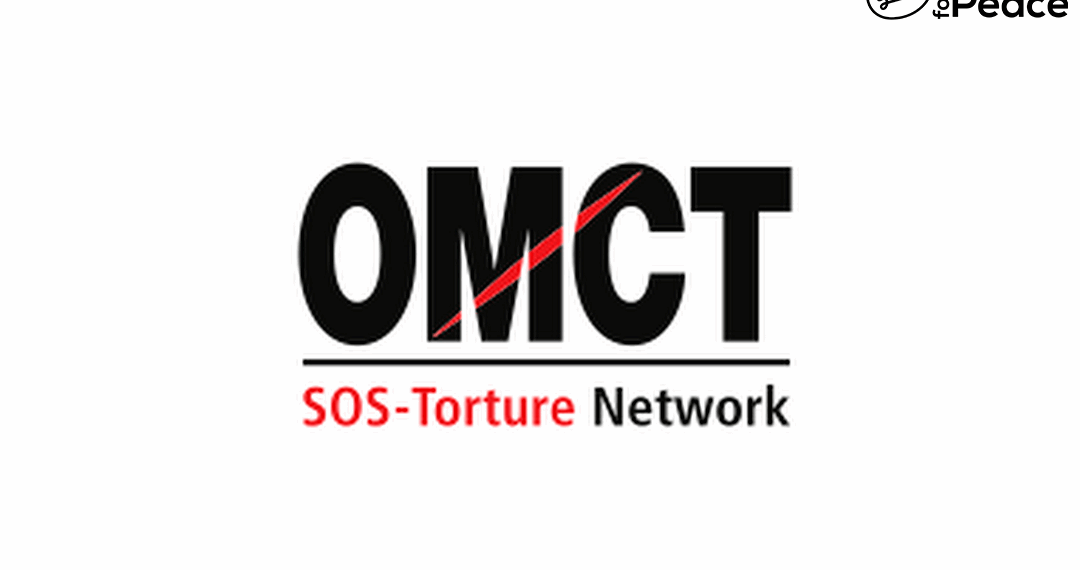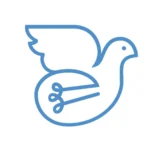Torture data matters for peace: Presenting the Global Torture Index
Author: Mariateresa Garrido V.
In June 2025, the World Organisation Against Torture (OMCT) launched the Global Torture Index. It is the first of its kind and provides insightful information about 26 countries, along with recommendations for each of them. The data in the Index shows that torture is a serious violation of human rights and a direct threat to peace. Where torture continues, fear replaces dialogue, impunity erodes the rule of law, and violence becomes normalized.
Mariateresa Garrido, the deputy director of the Global Center for Peace Innovation, had the opportunity to attend the launching event celebrated in Geneva, and saw the Torture Index as more than a monitoring tool. It is an example of how information and communication technologies (ICT) can be harnessed for peace. For that reason, we invited the coordinator of the project at the OMCT, Cecilia de Armas Michelis, to present it as part of the webinars hosted by the GCPI.
The Index systematizes vast amounts of data through standardized questionnaires, secure databases, and innovative data collection methods. It demonstrates how working with local civil society organisations together with digital tools can strengthen collaboration, transparency, support advocacy, and protect those at risk. This aligns with the GCPI’s broader mission and presents a significant opportunity to discuss how technological innovation can be used for peace.
To drive the conversation, we invited UPEACE Alumna, Alissa Chmiel, who also coordinates the initiative Digital Peace to moderate the conversation, and the OMCT colleagues from Afghanistan, Rohullah Esmati, and Abdullah Ahmadi, to provide insightful information on how the Index was developed and used by activists in the country.
The webinar took place on August 20, 2025, and here we present a summary of the discussion held.
Why an Index on Torture? How is it possible?
OMCT works in 90 countries with more than 200 members around the world. Through their work, they identified the need to collect comparable information that could be used to strengthen advocacy at local and international settings, while having a tool to build pressure for reform.
From identifying the need to executing the idea, the OMCT took three years. They considered the importance of developing a tool that wasn’t to name and shame, but one to build bridges between human rights defenders and states. In its development, the OMCT included training, shared practices, and collaboration between stakeholders.
Taking into consideration the vulnerability of OMCT trusted partners and members in charge of the data collection process, the organization included risk assessments and mitigation practices, as well as following a strict privacy policy, and databases complying with European data protection standards to protect those who are most at risk.
To collect the information, OMCT’s team members decided to follow the international human rights’ indicators framework, led by the OHCHR, that considers:
- Structural indicators measuring the legal framework.
- Process indicators measuring public policies and budgets.
- Outcome indicators measuring the implementation of results for people at risk.
Data comes from a triangulated approach: reports from NGOs, official sources, first-hand interviews, and focus group discussions.
Data Organization
The Index relies on a comprehensive methodology combining a questionnaire with over 500 questions organized around seven thematic pillars:
- Political commitment against torture.
- Ending police brutality and institutional violence.
- Freedom from torture while deprived of liberty.
- Ending impunity.
- Victims’ rights.
- Protection for all groups.
- Right to defend and civic space.
These pillars allow analysis at national and global levels. They also highlight the link between torture and broader governance issues such as rule of law, democracy, strong institutions and stability.
Data is collected by local partners and triangulated with UN reports, international NGOs, and interviews. A steering committee provides oversight, while statisticians in Geneva ensure the Index remains a quantitative measurement tool. Transparency and access to information are treated as indicators in themselves, with “lack of data” penalized to reflect how opacity often signals greater risk of torture.
This structure ensures comparability across regions while also capturing country-specific realities. Importantly, the Index balances quantitative scoring with qualitative fact sheets, recommendations, and narratives to guide advocacy. The result is a living tool that highlights both risks and good practices, and that can evolve with new data and technology.
Global Findings
The Index classifies states into five risk levels, from very high to low. Scores run from 0 to 100, with higher numbers reflecting greater compliance with international standards. Results from the 26 countries considered in the 2025 edition show an alarming picture:
- Very high risk: 6 countries, including Bahrain, Belarus, El Salvador, Ethiopia, Libya, and the Russian Federation.
- High risk: 13 countries, including India, Mexico, Nigeria, Tunisia, and Turkey.
- Considerable risk: 4 countries, such as Argentina and Hungary.
- Moderate risk: 3 countries, including Italy, Spain, and Moldova.
- Low risk: none.
The findings reveal worrying trends: police brutality is high in 18 countries, impunity is very high in nine and high in 12, and victims’ rights emerged as the weakest thematic pillar, with many countries lacking laws or resources to support victims.
Civic space is also under threat, with widespread judicial harassment of human rights defenders and many forced into exile. The index shows that the civic space is high risk in 10 countries and very high in 7, and in 11 countries, human rights defenders have been forced into exile in the last three years.
Overcrowded prisons, frequent deaths in custody, and abuses against children in detention—including solitary confinement and degrading searches—add to the alarming picture. These results underscore that torture remains a global problem, deeply connected to weak institutions, repression, and instability
Afghanistan Case Study
The Afghanistan pilot illustrates the Index’s potential and limits. In their presentation, Rohullah Esmati and Abdullah Ahmadi, highlighted the benefits of following a mixed-method design because it ensured reliability, even in restrictive conditions.
They explained that the data collection process combined revision of UN reports (UNAMA, OHCHR), international NGOs, local documentation, interviews, and focus groups. The combination of methods allowed them to give voices to the victims while creating a positive tool for the state.
Yet, they also discussed several of the challenges they face, including:
- No access to detention facilities.
- Closure of oversight bodies (AIHRC, Ministry of Women’s Affairs).
- 43% of media outlets closed.
- High risk of reprisals against victims and defenders.
- Collapse of the legal framework, including the repeal of the 2017 Anti-Torture Law.
Despite that, they were able to identify that arbitrary arrests take place, and in general, those under detention lack fair trial rights. Also, they recognized that there’s widespread torture and ill-treatment, especially in intelligence and military detention facilities, and the prevalence of a culture of impunity, with no investigations or remedies for victims.
The results are used in various ways. At the national level, it helps them to document violations, create a historical record, and provide data for future truth and justice processes. It also supports Afghan civil society, inside and outside the country. At the international level, it strengthens advocacy at the UN, informs oral statements at the Human Rights Council, and supports legal cases under universal jurisdiction.
The Index and Peace
Torture is a jus cogens norm: it is universally prohibited, with no exceptions. Yet practice shows widespread violations. In consequence, preventing torture is essential for peace:
- It builds trust in justice systems and institutions so that victims can lodge complaints while keeping a historical record of the situations registered.
- It strengthens the rule of law and accountability. When more people have access to information concerning human rights violations, accountability increases, as well as the use of legal procedures to protect human rights.
- It raises the alarm as an early warning when human rights violations are occurring. The international system should work towards the prevention of situations that affect human dignity and that put at risk international peace and security, this index contributes to this goal
The Index is more than a monitoring tool. It is an open-access platform that systematizes data, links it to human rights regulations, and provides filters to present information and recommendations to improve the situations observed in any of the pillars included. For that reason, it is a platform for advocacy, awareness, and dialogue. It gives civil society a tool to demand accountability while providing data for the UN, EU, and other actors interested in achieving SDG 16.
In its 40 years of experience, OMCT has contributed greatly to the fight against torture, and the Index is an innovative idea to continue finding opportunities to engage with stakeholders in local and international environments to ensure a world without torture.
The Index is still in the process of growing. Cecilia and other OMCT members recognize the importance of expanding country representation and fostering stronger collaboration with stakeholders. For that reason, if you would like to contribute to this project, you can contact Cecila de Armas Michelis at cam@omct.org
Conclusions
The Global Torture Index marks an important step in the use of ICT for peace. It provides evidence, creates a space for dialogue and advocacy, and presents recommendations to improve the situation in each country.
The project is not only concerned with presenting information on the situation of torture around the world, but also with the protection of those who report, and the amplification of their voices.
The Global Torture Index is not a tool for shaming. It is a tool for action. By making torture visible, it strengthens peacebuilding. By providing data, it supports accountability.
Preventing torture is not only about compliance with international law. It is about creating the foundations of peace.
Author’s Short Bio
Dr. Mariateresa Garrido is an Associate Professor in the Department of International Law at UPEACE, the Doctoral Program Coordinator, and the Deputy Director of the UPEACE Global Center for Peace Innovation. She is an international lawyer and holds a Doctorate from UPEACE. Her main research area is related to the exercise of the right to freedom of expression and the protection of journalists in Latin America, but she is also researching the interaction between human rights and Information and Communication Technologies. She uses mixed methodologies and legal research to explore linkages between the law, journalism, and new technologies.





